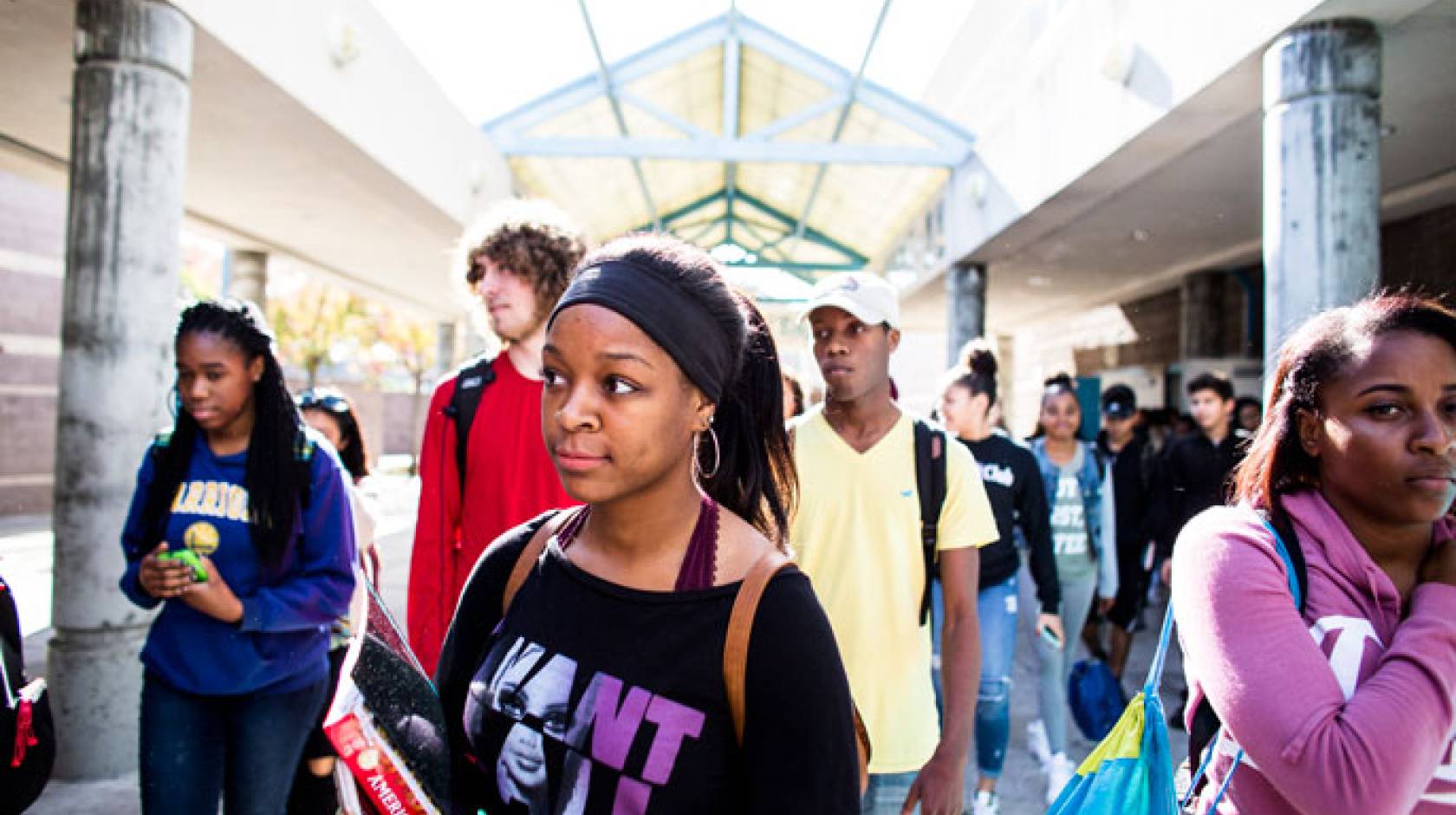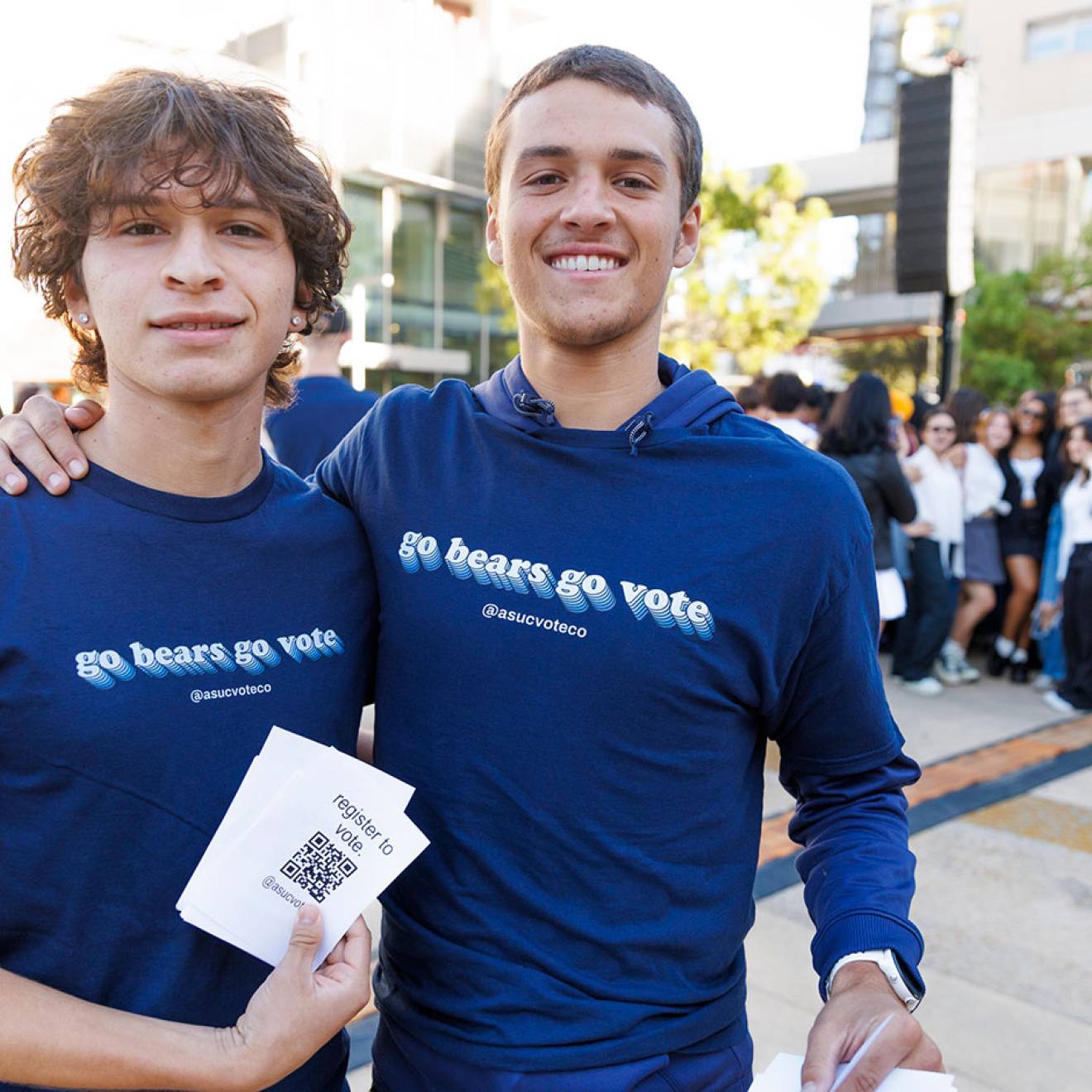Nicole Freeling, UC Newsroom

A seven-minute lecture on sociology may not provide deep insight into the subject matter – but UC Santa Barbara professor Victor Rios believes it might light the spark that sets a kid on the path to college.
The noted author, whose TED talk about high school dropouts has garnered more than a million views, is one of the speakers who will join UC Santa Barbara Chancellor Henry Yang at the campus’s Corwin Pavillion on Friday (Oct. 13) to speak to 350 high school juniors and seniors from nine area public schools.
The event is the first of dozens of outreach efforts taking place this fall as part of Achieve UC, launched by UC President Janet Napolitano and other UC leaders to encourage students in communities with low college-going rates to aim for and attain a high-quality college education.

Credit: ket.org
After passing out a mock course syllabus, Rios will launch into a mini-lecture from his Sociology 101 Class, what he describes as a “technical polemic on issues facing society.”
“Students hear a lot of talk about college and the benefits of going to college, but they don’t have any sense of what university is like,” said Rios. “If I’m successful, some of the students will think, ‘I kind of liked what he was talking about, so I can see myself there,” he said.
Rios grew up amid rampant poverty and violence in the housing projects of East Oakland. Though he was a kid with curiosity and smarts, higher education in that environment “was like somebody talking to you about the 10th planet in the solar system — it was such an abstraction,” he said.
In working with youth in underserved communities, he tries to offer a glimpse into what life on that distant planet is like.
As a former high school dropout and gang member, he offers himself as proof that a student’s academic potential doesn’t depend on their background or family circumstances.
Aid covers much of the cost for many students
That message will be echoed in coming weeks by other University of California leaders, who are taking to the halls and auditoriums of high schools around the state to urge students to aim high.
Altogether, Napolitano, chancellors and senior leaders from each of UC’s 10 campuses, will visit with roughly 2,500 high school students over the next month to deliver inspiration and practical advice on making informed choices about college.
The goal, in part, is to allay concerns about cost and access that can cause eligible California students to rule out a UC education — or worse, cause them to forego college altogether.

Credit: Elena Zhukova
“We are here to tell students: Don’t miss out on a world-class education because you think you can’t afford it or because you think that students like you don’t go to schools like UC,” Napolitano said. “Students like you are thriving on our campuses every day — and going on to do amazing things.”
One of the most important messages: A UC education is more affordable than many students realize.
“More than half of California undergrads have all their tuition and fees covered by financial aid,” Napolitano said.
Three-quarters of California undergraduates receive some financial aid, and 57 percent qualify for the Blue and Gold Opportunity plan. It covers not just tuition, but also provides financial help with housing, books and other college costs for students from households with incomes of $80,000 or less.
For low-income students, the university’s generous financial aid makes a UC education one of the most affordable options available.
Beyond inspiration, students are offered practical resources to help them plan, apply and pay for college. Advisers will even be on hand to guide students in completing their UC applications, with workshops on how to address “Personal Insight” questions and put together a powerful application.
And for those not ready for a four-year university, educators will also discuss options for transferring to UC from a California Community College — as one in three UC students do.
Inspiring students to see their potential
In addition to hearing from UC leaders, students will also hear the stories of current undergraduates and UC alums from their own communities.
“I was never supposed to go to college — and I was certainly never supposed to become a college professor,” Rios said. What changed things for him: a teacher who believed in him and his own desire to make a difference in his community — something he realized he could do more effectively with the credibility conferred by a college degree.
Rios has become a celebrated author and scholar for challenging the notion that students who struggle in school or with difficult upbringings are “at-risk.”
He believes they should be considered ‘at-potential,’ — students with hidden reserves of talent just waiting to be unlocked, as he was.
The Achieve UC effort aims to tap that potential. Among the nation’s top-tier research universities, UC leads the way for economic diversity. About 42 percent of its students are among the first generation in their family to attend college, and a slightly smaller proportion are from low-income households.
Statistics show that in California and across the country, low-income and underrepresented minority students are less likely to apply to top schools, including UC campuses, even when they are high-achievers who are well qualified to attend.
UC is working to change perceptions, so that these eligible students know they have what it takes, said UC Vice Provost of Diversity and Engagement Yvette Gullatt.
“We’re not just looking for students with flawless academic track records and lengthy lists of academic accomplishments,” Gullatt said. “We’re looking to find out how hard has a student challenged themselves and taken advantage of the opportunities available.”
Many students are surprised to hear that high percentages of applicants from their schools get in to UC — in most cases, more than half of those who apply are admitted, and at some schools, that figure is closer to three-quarters.
Efforts like Achieve UC are helping to increase the number of underrepresented minority students across the UC system, which this fall welcomed one of the largest and most diverse classes in its history.
“We’re here to tell students that they have important talents and perspectives to bring to our campuses,” Gullatt said.

